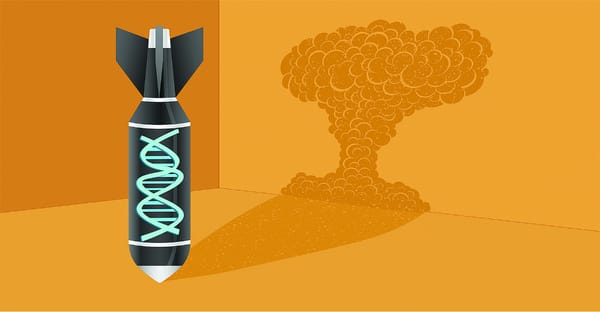Tesla’s Semi announcement is really just a distraction
Why is a company that just posted the worst fiscal quarter in its history introducing yet more products they’ll fail to deliver on time?

What came first, the Model 3 or the Falcon Heavy?
What’s the first word that comes to mind when I say Tesla? Performance, ecology? What about delays? If you’ve followed Tesla or SpaceX, you’re undoubtedly aware of a mysterious time zone known as Elon Standard Time™. Symptoms include thinking the Falcon Heavy debut is 6 months away or assuming the upcoming Falcon 9 launch will proceed without delay. A new wave of victims of this phenomenon (i.e. customers) experience a wave of euphoria quickly followed by confusion and profound sadness as the Fremont factory churns out just 50 Model 3s each day. Moreover, most of the initial Model 3 batch is given to employees - the last people we can expect to complain should the vehicles arrive with any production defects. Convenient.
It’s a rather depressing picture brightened only by the fact that the few Models 3s that do find their way to reviewers are described as worthy competitors to their gas-guzzling German counterparts. Autotrader’s Doug DeMuro described the small sedan as the “The Coolest Car of 2017”, noting that it actually offers better value than the likes of a BMW 340i. It remains to be seen, however, if that statement still holds true when the Model 3 production finally catches up in 2019.
Roadster as a diversion tactic?
The Cambridge English Dictionary defines a red herring as a subject that takes people’s attention away from the central point being considered. Now for an example of one: The 2020 Tesla Roadster. Franz von Holzhausen’s latest masterpiece could not be more eye-catching or outrageous. Tesla’s Chief Designer drifted the car onto the stage, only to present a spec sheet that could equally as well have been put together by a child with no grasp of reality. The Roadster accelerates faster than any car in production and with a top speed of 400+ km/h could easily outrun an F1 car and be highly competitive among the Indy 500 field. Speaking of which, a 200KWh battery would allow it to complete the legendary 500-mile (804km) race and then some more (1000km to be exact, though perhaps not at racing speed) without being recharged.
“The Fremont factory churns out just 50 Model 3s each day”
The Tesla Roadster is without a doubt an incredible car, unprecedented even. You’d have to be either crazy or completely reasonable (considering the $200,000 price tag along with Tesla’s $50,000 reservation fee) not to want one. Unfortunately, while the $250 million racked up in reservation fees can’t hurt, the Roadster likely can’t turn around Tesla’s abysmal earnings (or lack thereof; Tesla lost a staggering $619 million just this quarter). Another vehicle - the primary unveiling at last week’s event - just might if it can escape the pitfall titled “Production Hell”.

Is truck driving the dream job of the future?
A sleek design that accelerates about as fast as a Porsche 911 Targa 4, with an expected price tag of well over $200,000. Throw in two 15-inch touchscreens and I’m sold. Oh, you’ll pay me to drive it too? Sign me up! Where’s the catch? It’s a truck? Maybe I’ll stick to my Fluid Dynamics problem sheets then. Nevertheless, Tesla’s least appealing product also happens to be one of its most important. Scheduled to begin production in 2019, it will undoubtedly make a splash in the trucking industry when it finally hits the market in 2021 (notice a pattern yet?).
“Tesla lost a staggering $619 million just this quarter”
Transporting goods in 2017 is a rather destructive venture - your average freight truck pollutes the environment as much as 21 cars. In the United States, trucks account for almost six times as much greenhouse gas emissions as planes do. Yet, according to a study conducted by Shell, the average fuel consumption of a truck has not budged since the 1990s. The Tesla Semi cuts down on emissions not only with its innovative power plant, but also with its state-of-the-art aerodynamics that Musk was quick to favourably compare to the Bugatti Chiron. Of course, any ecological and economical advantage of Tesla’s hyper-truck will inevitably be nullified when some asshole discovers the Semi has enough torque to perform burnouts.
“Your aveage freight truck pollutes the environment as much as 21 cars”
Finding a way out of Production Hell…
Production Hell is, rather ironically, a term coined by Musk himself to describe the difficulties a rapidly expanding former start-up experiences when trying to match the production volume of the likes of VW or GM. Encountering production hell was always a question of when, not if. Overcoming it is what separates failed start-ups from giant corporations, which is why the Tesla Model 3 is not only the “Coolest Car of 2017”, but perhaps also the most important one. The Semi and Roadster, meanwhile, represent merely a welcome distraction from the fears and worries over Tesla’s future. That doesn’t mean they aren’t exciting or innovative - they are both, pushing boundaries in terms of range and performance - but if the folks over in Fremont can’t sort out their production line it could be too late.
“The Semi and Roadster, represent merely a welcome distraction from worries over Tesla’s future”
Is Tesla too big to fail? I don’t know. The future is electric and is approaching quicker than “Big Auto” anticipated, so Tesla is certainly backing the right horse. Despite numerous delays to what is the company’s greatest challenge yet, Elon Musk has not yet failed to deliver on a product. Perhaps it’s time to approach this megalomaniac’s expensive pet project with some cautious optimism. After all, I would totally do a burnout in an electric semi truck given the chance.








